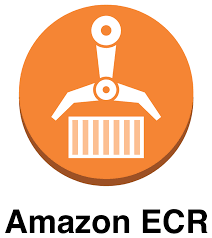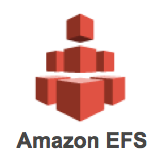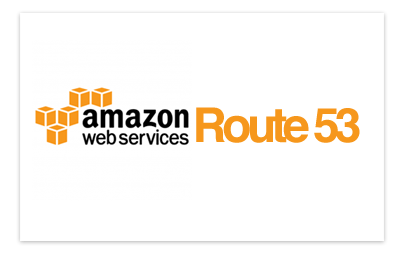View
Sorting
From A to Z
Products found: 102
Amazon Alexa for Business
Alexa for Business is a service that enables organizations and employees to use Alexa to get more work done. With Alexa for Business, employees can use Alexa as their intelligent assistant to be more productive in meeting rooms, at their desks, and even with the Alexa devices they already have at home.
Benefits SIMPLIFIED MEETING ROOMS
Alexa for Business lets your employees reserve meeting rooms and start conference calls using voice. With Alexa, there is no need to use remote controls, look up conference call information, and manually dial in to meetings. Employees can just say “Alexa, is this room free?” to find if the meeting room is available, or say, “Alexa, start my meeting” to start their meeting. MORE PRODUCTIVE EMPLOYEES
Alexa lets your employees be more productive throughout their day. Alexa can manage schedules, keep track of to-do list, and set reminders. Alexa can schedule 1:1 meetings between colleagues, move and cancel meetings, and dial into conference calls, so employees stay focused on important tasks whether at home, at work, or on the go. VOICE ENABLED APPLICATIONS
Voice offers a more intuitive way to access business applications. With Alexa for Business, IT teams can build custom skills that add a voice interface to applications such as Salesforce, ServiceNow, or any of your custom apps and services. IT teams can provide rich, personalized voice experiences that redefine the way employees get work done. Custom skills can be selectively enabled in conference rooms or for employees to use on their personal devices. INTUITIVE MANAGEMENT AND CONTROL
Alexa for Business helps administrators provision and manage Alexa devices across the organization from a centralized console. With Alexa for Business, IT admins can easily provision multiple Alexa devices at the same time, and add them to the Alexa for Business account. Admins can also monitor device usage and device status from the Alexa for Business console and can setup CloudWatch alarms to be notified when devices are unplugged.
How it Works Alexa for Business utilizes information about the devices, user accounts, and skills in your organization. When someone in your organization asks Alexa a question, Alexa uses this information to respond or perform the requested action. For example, when a user says “Alexa, start the meeting” in a conference room, Alexa uses the location of the device, the calendar information for the room, and the type of video conferencing equipment available, all stored in your Alexa for Business account, to start the meeting.
Benefits SIMPLIFIED MEETING ROOMS
Alexa for Business lets your employees reserve meeting rooms and start conference calls using voice. With Alexa, there is no need to use remote controls, look up conference call information, and manually dial in to meetings. Employees can just say “Alexa, is this room free?” to find if the meeting room is available, or say, “Alexa, start my meeting” to start their meeting. MORE PRODUCTIVE EMPLOYEES
Alexa lets your employees be more productive throughout their day. Alexa can manage schedules, keep track of to-do list, and set reminders. Alexa can schedule 1:1 meetings between colleagues, move and cancel meetings, and dial into conference calls, so employees stay focused on important tasks whether at home, at work, or on the go. VOICE ENABLED APPLICATIONS
Voice offers a more intuitive way to access business applications. With Alexa for Business, IT teams can build custom skills that add a voice interface to applications such as Salesforce, ServiceNow, or any of your custom apps and services. IT teams can provide rich, personalized voice experiences that redefine the way employees get work done. Custom skills can be selectively enabled in conference rooms or for employees to use on their personal devices. INTUITIVE MANAGEMENT AND CONTROL
Alexa for Business helps administrators provision and manage Alexa devices across the organization from a centralized console. With Alexa for Business, IT admins can easily provision multiple Alexa devices at the same time, and add them to the Alexa for Business account. Admins can also monitor device usage and device status from the Alexa for Business console and can setup CloudWatch alarms to be notified when devices are unplugged.
How it Works Alexa for Business utilizes information about the devices, user accounts, and skills in your organization. When someone in your organization asks Alexa a question, Alexa uses this information to respond or perform the requested action. For example, when a user says “Alexa, start the meeting” in a conference room, Alexa uses the location of the device, the calendar information for the room, and the type of video conferencing equipment available, all stored in your Alexa for Business account, to start the meeting.
Amazon Aurora
Amazon Aurora is a MySQL and PostgreSQL-compatible relational database built for the cloud, that combines the performance and availability of traditional enterprise databases with the simplicity and cost-effectiveness of open source databases.
Amazon Aurora is up to five times faster than standard MySQL databases and three times faster than standard PostgreSQL databases. It provides the security, availability, and reliability of commercial databases at 1/10th the cost. Amazon Aurora is fully managed by Amazon Relational Database Service (RDS), which automates time-consuming administration tasks like hardware provisioning, database setup, patching, and backups.
Amazon Aurora features a distributed, fault-tolerant, self-healing storage system that auto-scales up to 64TB per database instance. It delivers high performance and availability with up to 15 low-latency read replicas, point-in-time recovery, continuous backup to Amazon S3, and replication across three Availability Zones (AZs).
Benefits High Performance and Scalability Get 5X the throughput of standard MySQL and 3X the throughput of standard PostgreSQL. This performance is on par with commercial databases, at 1/10th the cost. You can easily scale your database deployment up and down from smaller to larger instance types as your needs change, or let Aurora Serverless handle scaling automatically for you. To scale read capacity and performance, you can add up to 15 low latency read replicas across three Availability Zones. Amazon Aurora automatically grows storage as needed, up to 64TB per database instance.
High Availability and Durability Amazon Aurora is designed to offer greater than 99.99% availability, replicating 6 copies of your data across 3 Availability Zones and backing up your data continuously to Amazon S3. It transparently recovers from physical storage failures; instance failover typically takes less than 30 seconds. You can also backtrack within seconds to a previous point in time, to recover from user errors. With Global Database, a single Aurora database can span multiple AWS regions to enable fast local reads and quick disaster recovery.
Highly Secure Amazon Aurora provides multiple levels of security for your database. These include network isolation using Amazon VPC, encryption at rest using keys you create and control through AWS Key Management Service (KMS) and encryption of data in transit using SSL. On an encrypted Amazon Aurora instance, data in the underlying storage is encrypted, as are the automated backups, snapshots, and replicas in the same cluster.
MySQL and PostgreSQL Compatible The Amazon Aurora database engine is fully compatible with existing MySQL and PostgreSQL open source databases, and adds compatibility for new releases regularly. This means you can easily migrate MySQL or PostgreSQL databases to Aurora using standard MySQL or PostgreSQL import/export tools or snapshots. It also means the code, applications, drivers, and tools you already use with your existing databases can be used with Amazon Aurora with little or no change.
Fully Managed Amazon Aurora is fully managed by Amazon Relational Database Service (RDS). You no longer need to worry about database management tasks such as hardware provisioning, software patching, setup, configuration, or backups. Aurora automatically and continuously monitors and backs up your database to Amazon S3, enabling granular point-in-time recovery. You can monitor database performance using Amazon CloudWatch, Enhanced Monitoring, or Performance Insights, an easy-to-use tool that helps you quickly detect performance problems.
Migration Support MySQL and PostgreSQL compatibility make Amazon Aurora a compelling target for database migrations to the cloud. If you're migrating from MySQL or PostgreSQL, see our migration documentation for a list of tools and options. To migrate from commercial database engines, you can use the AWS Database Migration Service for a secure migration with minimal downtime.
Benefits High Performance and Scalability Get 5X the throughput of standard MySQL and 3X the throughput of standard PostgreSQL. This performance is on par with commercial databases, at 1/10th the cost. You can easily scale your database deployment up and down from smaller to larger instance types as your needs change, or let Aurora Serverless handle scaling automatically for you. To scale read capacity and performance, you can add up to 15 low latency read replicas across three Availability Zones. Amazon Aurora automatically grows storage as needed, up to 64TB per database instance.
High Availability and Durability Amazon Aurora is designed to offer greater than 99.99% availability, replicating 6 copies of your data across 3 Availability Zones and backing up your data continuously to Amazon S3. It transparently recovers from physical storage failures; instance failover typically takes less than 30 seconds. You can also backtrack within seconds to a previous point in time, to recover from user errors. With Global Database, a single Aurora database can span multiple AWS regions to enable fast local reads and quick disaster recovery.
Highly Secure Amazon Aurora provides multiple levels of security for your database. These include network isolation using Amazon VPC, encryption at rest using keys you create and control through AWS Key Management Service (KMS) and encryption of data in transit using SSL. On an encrypted Amazon Aurora instance, data in the underlying storage is encrypted, as are the automated backups, snapshots, and replicas in the same cluster.
MySQL and PostgreSQL Compatible The Amazon Aurora database engine is fully compatible with existing MySQL and PostgreSQL open source databases, and adds compatibility for new releases regularly. This means you can easily migrate MySQL or PostgreSQL databases to Aurora using standard MySQL or PostgreSQL import/export tools or snapshots. It also means the code, applications, drivers, and tools you already use with your existing databases can be used with Amazon Aurora with little or no change.
Fully Managed Amazon Aurora is fully managed by Amazon Relational Database Service (RDS). You no longer need to worry about database management tasks such as hardware provisioning, software patching, setup, configuration, or backups. Aurora automatically and continuously monitors and backs up your database to Amazon S3, enabling granular point-in-time recovery. You can monitor database performance using Amazon CloudWatch, Enhanced Monitoring, or Performance Insights, an easy-to-use tool that helps you quickly detect performance problems.
Migration Support MySQL and PostgreSQL compatibility make Amazon Aurora a compelling target for database migrations to the cloud. If you're migrating from MySQL or PostgreSQL, see our migration documentation for a list of tools and options. To migrate from commercial database engines, you can use the AWS Database Migration Service for a secure migration with minimal downtime.
Amazon Chime
Amazon Chime is a communications service that lets you meet, chat, and place business calls inside and outside your organization, all using a single application. With Amazon Chime, you have the flexibility to choose the features that you need for online meetings, video conferencing, and business calling, and pay only when you use them.
Amazon Chime Voice Connector is a service that carries your voice traffic over the internet and elastically scales to meet your capacity needs. This lets you save money by eliminating fixed telephone network costs and simplifies your voice network administration by transitioning it to the AWS Cloud.
BENEFITS
Choose how you communicate
Amazon Chime lets you choose the communication options that are best suited for your business. You have the option to choose from meetings, chat, and business calling or use Voice Connector to direct your voice traffic over the internet. With Chime, you have the flexibility to choose the communication option that fits with your business needs, and the freedom to scale up or down as needed.
Use one app for all your communication
Amazon Chime lets you meet, chat, and place business phone calls with a single, secure application. You don’t need to switch between applications to collaborate and can instantly go from a chat to a call, share your screen, and even invite more people to join your meeting. When it’s time for your meeting, Amazon Chime will call you on all your devices to ensure you are never late and your meetings start on time.
Pay only for what you use
Amazon Chime offers pay-per-use pricing which lets you pay for features you use, on the days that you use them. With pay-per-use pricing there’s no upfront investment or long-term contracts. You can switch between Basic features that don’t include a charge, and Pro features that do include a charge. You can use the right features for your business without worrying about overspending.
Choose how you communicate
Amazon Chime lets you choose the communication options that are best suited for your business. You have the option to choose from meetings, chat, and business calling or use Voice Connector to direct your voice traffic over the internet. With Chime, you have the flexibility to choose the communication option that fits with your business needs, and the freedom to scale up or down as needed.
Use one app for all your communication
Amazon Chime lets you meet, chat, and place business phone calls with a single, secure application. You don’t need to switch between applications to collaborate and can instantly go from a chat to a call, share your screen, and even invite more people to join your meeting. When it’s time for your meeting, Amazon Chime will call you on all your devices to ensure you are never late and your meetings start on time.
Pay only for what you use
Amazon Chime offers pay-per-use pricing which lets you pay for features you use, on the days that you use them. With pay-per-use pricing there’s no upfront investment or long-term contracts. You can switch between Basic features that don’t include a charge, and Pro features that do include a charge. You can use the right features for your business without worrying about overspending.
Amazon CloudFront
Amazon CloudFront is a fast content delivery network (CDN) service that securely delivers data, videos, applications, and APIs to customers globally with low latency, high transfer speeds, all within a developer-friendly environment. CloudFront is integrated with AWS – both physical locations that are directly connected to the AWS global infrastructure, as well as other AWS services. CloudFront works seamlessly with services including AWS Shield for DDoS mitigation, Amazon S3, Elastic Load Balancing or Amazon EC2 as origins for your applications, and Lambda@Edge to run custom code closer to customers’ users and to customize the user experience.
You can get started with the Content Delivery Network in minutes, using the same AWS tools that you're already familiar with: APIs, AWS Management Console, AWS CloudFormation, CLIs, and SDKs. Amazon's CDN offers a simple, pay-as-you-go pricing model with no upfront fees or required long-term contracts, and support for the CDN is included in your existing AWS Support subscription.
BENEFITS
Fast and global
The Amazon CloudFront content delivery network (CDN) is massively scaled and globally distributed. The CloudFront network has 166 points of presence (PoPs), and leverages the highly-resilient Amazon backbone network for superior performance and availability for your end users.
Security at the Edge
Amazon CloudFront is a highly-secure CDN that provides both network and application level protection. Your traffic and applications benefit through a variety of built-in protections such as AWS Shield Standard, at no additional cost. You can also use configurable features such as AWS Certificate Manager (ACM) to create and manage custom SSL certificates at no extra cost.
Highly Programmable
Amazon CloudFront features can be customized for your specific application requirements. Lambda@Edge functions, triggered by CloudFront events, extend your custom code across AWS locations worldwide, allowing you to move even complex application logic closer to your end users to improve responsiveness. The CDN also supports integrations with other tools and automation interfaces for today's DevOps and CI/CD environments by using native APIs or AWS tools.
Deep integration with AWS
Amazon CloudFront is integrated with AWS services such as Amazon S3, Amazon EC2, Elastic Load Balancing, Amazon Route 53, and AWS Elemental Media Services . They are all accessible via the same console and all features in the CDN can be programmatically configured by using APIs or the AWS Management Console. Lastly, if you use AWS origins such as Amazon S3, Amazon EC2 or Elastic Load Balancing, you don’t pay for any data transferred between these services and CloudFront.
Amazon CloudWatch
Amazon CloudWatch is a monitoring and management service built for developers, system operators, site reliability engineers (SRE), and IT managers. CloudWatch provides you with data and actionable insights to monitor your applications, understand and respond to system-wide performance changes, optimize resource utilization, and get a unified view of operational health. CloudWatch collects monitoring and operational data in the form of logs, metrics, and events, providing you with a unified view of AWS resources, applications and services that run on AWS, and on-premises servers. You can use CloudWatch to set high resolution alarms, visualize logs and metrics side by side, take automated actions, troubleshoot issues, and discover insights to optimize your applications, and ensure they are running smoothly.
BENEFITS
Access all your data from a single platform
Modern applications are distributed (that is, they run on microservices architectures) and generate lots of data in the form of metrics, logs, and more. You need a way to easily collect, access, and correlate these data points from individual sources in silos (server, network, database, etc.) to effectively monitor applications and infrastructure resources. Amazon CloudWatch enables you to collect metrics and logs from all your AWS resources, applications, and services that run on AWS and on-premises servers, helping you break down data silos so you can easily gain system-wide visibility.
Easiest way to collect custom and granular metrics for AWS resources
Monitoring your AWS resources is easy with Amazon CloudWatch. CloudWatch is natively integrated with more than 70 AWS services such as Amazon EC2, Amazon DynamoDB, Amazon S3, Amazon ECS, AWS Lambda, Amazon API Gateway, etc. that automatically publish detailed 1-minute metrics and custom metrics with up to 1-second granularity. You can use AWS Systems Manager to install a CloudWatch Agent, or you can use the CloudWatch API to easily collect, publish, and store this data in CloudWatch.
Visibility across your applications, infrastructure, and services
Gaining visibility across your distributed stack means correlating and visualizing metrics and logs to quickly pinpoint and resolve issues. With Amazon CloudWatch, you can visualize key metrics like CPU utilization and memory. You can also correlate a log pattern, e.g. error to a specific metric to quickly get the context and go from diagnosing the problem to understanding the root cause.
Improve total cost of ownership
Amazon CloudWatch enables you to set high resolution alarms and take automated actions. This means freeing up important resources to focus on adding business value. For example, you can get alerted on Amazon EC2 instances and set up Auto Scaling to add or remove instances. You can also execute automated responses to detect and shut down unused EC2 resources, reducing billing overages and improving resource optimization.
Optimize applications and operational resources
You need a unified operational view, real-time granular data, and historical reference to optimize performance and resource utilization. With Amazon CloudWatch, you get enhanced monitoring with 1-second granularity and up to 15 months of metrics storage and retention. You can also leverage native CloudWatch features, such as Metric Math, to perform calculations on your metric data. For example, you can aggregate usage across an entire fleet of EC2 instances to derive operational and utilization insights.
Derive actionable insights from logs
Amazon CloudWatch Logs Insights enables you to explore, analyze, and visualize your logs instantly, allowing you to troubleshoot operational problems with ease. With Logs Insights, you only pay for the queries you run. Logs Insights scales with your log volume and query complexity giving you answers in seconds. In addition, you can publish log-based metrics, create alarms, and correlate logs and metrics together in CloudWatch Dashboards for complete operational visibility.
Access all your data from a single platform
Modern applications are distributed (that is, they run on microservices architectures) and generate lots of data in the form of metrics, logs, and more. You need a way to easily collect, access, and correlate these data points from individual sources in silos (server, network, database, etc.) to effectively monitor applications and infrastructure resources. Amazon CloudWatch enables you to collect metrics and logs from all your AWS resources, applications, and services that run on AWS and on-premises servers, helping you break down data silos so you can easily gain system-wide visibility.
Easiest way to collect custom and granular metrics for AWS resources
Monitoring your AWS resources is easy with Amazon CloudWatch. CloudWatch is natively integrated with more than 70 AWS services such as Amazon EC2, Amazon DynamoDB, Amazon S3, Amazon ECS, AWS Lambda, Amazon API Gateway, etc. that automatically publish detailed 1-minute metrics and custom metrics with up to 1-second granularity. You can use AWS Systems Manager to install a CloudWatch Agent, or you can use the CloudWatch API to easily collect, publish, and store this data in CloudWatch.
Visibility across your applications, infrastructure, and services
Gaining visibility across your distributed stack means correlating and visualizing metrics and logs to quickly pinpoint and resolve issues. With Amazon CloudWatch, you can visualize key metrics like CPU utilization and memory. You can also correlate a log pattern, e.g. error to a specific metric to quickly get the context and go from diagnosing the problem to understanding the root cause.
Improve total cost of ownership
Amazon CloudWatch enables you to set high resolution alarms and take automated actions. This means freeing up important resources to focus on adding business value. For example, you can get alerted on Amazon EC2 instances and set up Auto Scaling to add or remove instances. You can also execute automated responses to detect and shut down unused EC2 resources, reducing billing overages and improving resource optimization.
Optimize applications and operational resources
You need a unified operational view, real-time granular data, and historical reference to optimize performance and resource utilization. With Amazon CloudWatch, you get enhanced monitoring with 1-second granularity and up to 15 months of metrics storage and retention. You can also leverage native CloudWatch features, such as Metric Math, to perform calculations on your metric data. For example, you can aggregate usage across an entire fleet of EC2 instances to derive operational and utilization insights.
Derive actionable insights from logs
Amazon CloudWatch Logs Insights enables you to explore, analyze, and visualize your logs instantly, allowing you to troubleshoot operational problems with ease. With Logs Insights, you only pay for the queries you run. Logs Insights scales with your log volume and query complexity giving you answers in seconds. In addition, you can publish log-based metrics, create alarms, and correlate logs and metrics together in CloudWatch Dashboards for complete operational visibility.
Amazon Connect
Amazon Connect is a self-service, cloud-based contact center service that makes it easy for any business to deliver better customer service at lower cost. Amazon Connect is based on the same contact center technology used by Amazon customer service associates around the world to power millions of customer conversations. The self-service graphical interface in Amazon Connect makes it easy for non-technical users to design contact flows, manage agents, and track performance metrics – no specialized skills required. There are no up-front payments or long-term commitments and no infrastructure to manage with Amazon Connect; customers pay by the minute for Amazon Connect usage plus any associated telephony services.
Amazon Connect Benefits
Easy to set up and manage
Setting up Amazon Connect is easy. With only a few clicks in the AWS Management Console, agents can begin taking calls within minutes. The drag and drop Contact Flow Editor allows you to create contact flows that define effective and efficient customer interactions without any coding.
Scalable and elastic
There is no infrastructure to deploy or manage, so you can scale your Amazon Connect contact center up or down, onboarding up to tens of thousands of agents in response to business cycles and paying only for the time callers are interacting with Amazon Connect plus any associated telephony charges.
Pay as you go
As an on-demand service, you pay for Amazon Connect usage by the minute with no long-term commitments or upfront charges. There is no minimum monthly fee. You are charged based on the number of minutes you use Amazon Connect to engage with your end customers, at the specified per minute rate. Pricing is not based on capacity, agent seats, or maintenance.
Reliable
Amazon Connect runs on Amazon Web Services proven infrastructure operating 42 Availability Zones within 16 geographic regions around the world. This makes Amazon Connect more highly available, fault tolerant and scalable than would be possible if a contact center solution was run from a single data center.
Open platform
Amazon Connect is an open platform so it is easy to integrate with other systems such as customer relationship management (CRM) solutions or the AWS platform. For example, you can use AWS Lambda to run code for a serverless application or backend service to build contact flow experiences that adapt to your customer needs in real time. And Amazon S3 can be used to store call recordings, where you can control access and lifecycle of the data.
Amazon EC2
Amazon Elastic Compute Cloud (Amazon EC2) is a web service that provides secure, resizable compute capacity in the cloud. It is designed to make web-scale cloud computing easier for developers.
Amazon EC2’s simple web service interface allows you to obtain and configure capacity with minimal friction. It provides you with complete control of your computing resources and lets you run on Amazon’s proven computing environment. Amazon EC2 reduces the time required to obtain and boot new server instances to minutes, allowing you to quickly scale capacity, both up and down, as your computing requirements change. Amazon EC2 changes the economics of computing by allowing you to pay only for capacity that you actually use. Amazon EC2 provides developers the tools to build failure resilient applications and isolate them from common failure scenarios.
BENEFITS
ELASTIC WEB-SCALE COMPUTING
Amazon EC2 enables you to increase or decrease capacity within minutes, not hours or days. You can commission one, hundreds, or even thousands of server instances simultaneously. You can also use Amazon EC2 Auto Scaling to maintain availability of your EC2 fleet and automatically scale your fleet up and down depending on its needs in order to maximize performance and minimize cost. To scale multiple services, you can use AWS Auto Scaling.
COMPLETELY CONTROLLED
You have complete control of your instances including root access and the ability to interact with them as you would any machine. You can stop any instance while retaining the data on the boot partition, and then subsequently restart the same instance using web service APIs. Instances can be rebooted remotely using web service APIs, and you also have access to their console output.
FLEXIBLE CLOUD HOSTING SERVICES
You have the choice of multiple instance types, operating systems, and software packages. Amazon EC2 allows you to select a configuration of memory, CPU, instance storage, and the boot partition size that is optimal for your choice of operating system and application. For example, choice of operating systems includes numerous Linux distributions and Microsoft Windows Server.
INTEGRATED
Amazon EC2 is integrated with most AWS services such as Amazon Simple Storage Service (Amazon S3), Amazon Relational Database Service (Amazon RDS), and Amazon Virtual Private Cloud (Amazon VPC) to provide a complete, secure solution for computing, query processing, and cloud storage across a wide range of applications.
RELIABLE
Amazon EC2 offers a highly reliable environment where replacement instances can be rapidly and predictably commissioned. The service runs within Amazon’s proven network infrastructure and data centers. The Amazon EC2 Service Level Agreement commitment is 99.99% availability for each Amazon EC2 Region.
SECURE
Cloud security at AWS is the highest priority. As an AWS customer, you will benefit from a data center and network architecture built to meet the requirements of the most security-sensitive organizations. Amazon EC2 works in conjunction with Amazon VPC to provide security and robust networking functionality for your compute resources.
INEXPENSIVE
Amazon EC2 passes on to you the financial benefits of Amazon’s scale. You pay a very low rate for the compute capacity you actually consume.
EASY TO START
There are several ways to get started with Amazon EC2. You can use the AWS Management Console, the AWS Command Line Tools (CLI), or AWS SDKs. AWS is free to get started.
BENEFITS
ELASTIC WEB-SCALE COMPUTING
Amazon EC2 enables you to increase or decrease capacity within minutes, not hours or days. You can commission one, hundreds, or even thousands of server instances simultaneously. You can also use Amazon EC2 Auto Scaling to maintain availability of your EC2 fleet and automatically scale your fleet up and down depending on its needs in order to maximize performance and minimize cost. To scale multiple services, you can use AWS Auto Scaling.
COMPLETELY CONTROLLED
You have complete control of your instances including root access and the ability to interact with them as you would any machine. You can stop any instance while retaining the data on the boot partition, and then subsequently restart the same instance using web service APIs. Instances can be rebooted remotely using web service APIs, and you also have access to their console output.
FLEXIBLE CLOUD HOSTING SERVICES
You have the choice of multiple instance types, operating systems, and software packages. Amazon EC2 allows you to select a configuration of memory, CPU, instance storage, and the boot partition size that is optimal for your choice of operating system and application. For example, choice of operating systems includes numerous Linux distributions and Microsoft Windows Server.
INTEGRATED
Amazon EC2 is integrated with most AWS services such as Amazon Simple Storage Service (Amazon S3), Amazon Relational Database Service (Amazon RDS), and Amazon Virtual Private Cloud (Amazon VPC) to provide a complete, secure solution for computing, query processing, and cloud storage across a wide range of applications.
RELIABLE
Amazon EC2 offers a highly reliable environment where replacement instances can be rapidly and predictably commissioned. The service runs within Amazon’s proven network infrastructure and data centers. The Amazon EC2 Service Level Agreement commitment is 99.99% availability for each Amazon EC2 Region.
SECURE
Cloud security at AWS is the highest priority. As an AWS customer, you will benefit from a data center and network architecture built to meet the requirements of the most security-sensitive organizations. Amazon EC2 works in conjunction with Amazon VPC to provide security and robust networking functionality for your compute resources.
INEXPENSIVE
Amazon EC2 passes on to you the financial benefits of Amazon’s scale. You pay a very low rate for the compute capacity you actually consume.
EASY TO START
There are several ways to get started with Amazon EC2. You can use the AWS Management Console, the AWS Command Line Tools (CLI), or AWS SDKs. AWS is free to get started.
Amazon Elastic Block Store (EBS)
Amazon Elastic Block Store (Amazon EBS) provides persistent block storage volumes for use with Amazon EC2 instances in the AWS Cloud. Each Amazon EBS volume is automatically replicated within its Availability Zone to protect you from component failure, offering high availability and durability. Amazon EBS volumes offer the consistent and low-latency performance needed to run your workloads. With Amazon EBS, you can scale your usage up or down within minutes – all while paying a low price for only what you provision.
Amazon EBS is designed for application workloads that benefit from fine tuning for performance, cost and capacity. Typical use cases include Big Data analytics engines (like the Hadoop/HDFS ecosystem and Amazon EMR clusters), relational and NoSQL databases (like Microsoft SQL Server and MySQL or Cassandra and MongoDB), stream and log processing applications (like Kafka and Splunk), and data warehousing applications (like Vertica and Teradata).
Amazon EBS Features
Persistent block storage for Amazon EC2 delivering capabilities and performance for the most demanding applications
High Performance Volumes
Choose between SSD-backed or HDD-backed volumes that can deliver the performance you need for your most demanding applications.
Availability
Each Amazon EBS volume is designed for 99.999% availability and automatically replicates within its Availability Zone to protect your applications from component failure.
Encryption
Amazon EBS encryption provides seamless support for data-at-rest and data-in-transit between EC2 instances and EBS volumes.
Access Management
Amazon’s flexible access control policies allow you to specify who can access which EBS volumes ensuring secure access to your data.
Snapshots
Protect your data by creating point-in-time snapshots of EBS volumes, which are backed up to Amazon S3 for long-term durability.
Elastic Volumes
Dynamically increase capacity, tune performance, and change the type of live EBS volumes.
Amazon EBS Benefits
Highly available, high performance, persistent block storage for Amazon EC2.
Reliable, Secure Storage
Each Amazon EBS volume provides redundancies within its Availability Zone to protect against failures. Encryption and access control policies deliver a strong defense-in-depth security strategy for your data.
Consistent, Low-latency Performance
Amazon EBS General Purpose (SSD) volumes and Amazon EBS Provisioned IOPS (SSD) volumes deliver low-latency through SSD technology and consistent I/O performance scaled to the needs of your application.
Backup, Restore, Innovate
Protect your data by taking point-in-time snapshots of your Amazon EBS volumes providing long-term durability for your data. Boost the agility of your business by using Amazon EBS snapshots to create new EC2 instances.
Quickly Scale Up, Easily Scale Down
Amazon EBS allows you to optimize your volumes for capacity, performance, or cost giving you the ability to dynamically adapt to the changing needs of your business.
Geographic Flexibility
Amazon EBS provides the ability to copy snapshots across AWS regions, enabling geographical expansion, data center migration, and disaster recovery providing flexibility and protecting for your business.
Optimized Performance
An Amazon EBS–optimized instance provides dedicated network capacity for Amazon EBS volumes. This provides the best performance for your EBS volumes by minimizing network contention between EBS and your instance.
Amazon Elastic Container Registry (ECR)
Amazon Elastic Container Registry (ECR) is a fully-managed Docker container registry that makes it easy for developers to store, manage, and deploy Docker container images. Amazon ECR is integrated with Amazon Elastic Container Service (ECS), simplifying your development to production workflow. Amazon ECR eliminates the need to operate your own container repositories or worry about scaling the underlying infrastructure. Amazon ECR hosts your images in a highly available and scalable architecture, allowing you to reliably deploy containers for your applications. Integration with AWS Identity and Access Management (IAM) provides resource-level control of each repository. With Amazon ECR, there are no upfront fees or commitments. You pay only for the amount of data you store in your repositories and data transferred to the Internet.
FEATURES:
Amazon Elastic Container Service integration
Amazon Elastic Container Registry (ECR) is integrated with Amazon ECS allowing you to easily store, run, and manage container images for applications running on Amazon ECS. All you need to do is specify the Amazon ECR repository in your Task Definition and Amazon ECS will retrieve the appropriate images for your applications.
Docker support
Amazon ECR supports Docker Registry HTTP API V2 allowing you to use Docker CLI commands (e.g., push, pull, list, tag) or your preferred Docker tools to interact with Amazon ECR, maintaining your existing development workflow. You can easily access Amazon ECR from any Docker environment, whether in the cloud, on-premises, or on your local machine.
AWS Marketplace
Amazon ECR stores both the containers you create and any container software you buy through AWS Marketplace. AWS Marketplace for Containers offers verified container software for high performance computing, security, and developer tools, as well as SaaS products that manage, analyze, and protect container applications.
High availability and durability
Amazon ECR stores your container images in Amazon S3. Your data is redundantly stored across multiple facilities and multiple devices in each facility.
Team collaboration
Amazon ECR supports the ability to define and organize repositories in your registry using namespaces. This allows you to organize your repositories based on your team’s existing workflows. You can set which API actions another user may perform on your repository (e.g., create, list, describe, delete, and get) through resource-level policies, allowing you to easily share your repositories with different users and AWS accounts.
Access control
Amazon ECR uses AWS Identity and Access Management to control and monitor who and what (e.g., EC2 instances) can access your container images. Through IAM you can define policies to allow users within the same AWS account or other accounts to access your container images. You can also further refine these policies by specifying different permissions for different users and roles, e.g push, pull, or full admin access.
Encryption
You can transfer your container images to and from Amazon ECR via HTTPS. Your images are also automatically encrypted at rest using Amazon S3 server-side encryption.
Third-party integrations
Amazon ECR is integrated with third-party developer tools. You can integrate Amazon ECR into your continuous integration and delivery process allowing you to maintain your existing development workflow.
PRICING:
With Amazon Elastic Container Registry, there are no upfront fees or commitments. You pay only for the amount of data you store in your repositories and data transferred to the Internet. Amazon ECR includes a Free Tier of 500MB-month of storage.
AWS Free Tier
As part of the AWS Free Tier, you can get started with Amazon Elastic Container Registry for free. Amazon ECR offers new customers 500MB-month of storage for one year.
Your free usage is calculated each month across all regions and automatically applied to your bill - free usage does not accumulate.
Amazon Elastic Container Service (ECS)
Amazon Elastic Container Service (Amazon ECS) is a highly scalable, high-performance container orchestration service that supports Docker containers and allows you to easily run and scale containerized applications on AWS. Amazon ECS eliminates the need for you to install and operate your own container orchestration software, manage and scale a cluster of virtual machines, or schedule containers on those virtual machines.
With simple API calls, you can launch and stop Docker-enabled applications, query the complete state of your application, and access many familiar features such as IAM roles, security groups, load balancers, Amazon CloudWatch Events, AWS CloudFormation templates, and AWS CloudTrail logs.
FEATURES:
Amazon Elastic Container Service (Amazon ECS) allows you to easily run, scale, and secure Docker container applications on AWS. Applications packaged as containers locally will deploy and run in the same way as containers managed by Amazon ECS. Amazon ECS eliminates the need to install, operate, and scale your own container orchestration and cluster management infrastructure, and allows you to focus on the resource needs and availability requirements of your containerized application.
Amazon ECS enables you to grow from a single container to thousands of containers across hundreds of instances without creating additional complexity in how you run your application. You can run anything: applications, batch jobs, or microservices. Amazon ECS abstracts away all the complexity of the infrastructure so you can focus on designing, building, and running containerized applications.
With Amazon ECS, you can use AWS Fargate to fully manage your infrastructure and just focus on deploying containers Or, you can choose to have complete visibility and control of your underlying server cluster from creating and terminating Docker containers to viewing detailed cluster state information. You can integrate and use your own container scheduler or connect Amazon ECS into your existing software delivery process, such as continuous integration and delivery systems.
AWS Fargate Support
AWS Fargate technology is available with Amazon ECS. With AWS Fargate, you no longer have to select Amazon EC2 instance types, provision and scale clusters, or patch and update each server. You do not have to worry about task placement strategies, such as binpacking or host spread and tasks are automatically balanced across availability zones. Fargate manages the availability of containers for you. You just define your application’s requirements, select Fargate as your launch type in the console or CLI, and Fargate takes care of all the scaling and infrastructure management required to run your containers.
For developers who require more granular, server-level control over the infrastructure, Amazon ECS EC2 launch type allows you to manage a cluster of servers and schedule placement of containers on the servers.
Development
Docker Support
Amazon ECS supports Docker and enables you to run and manage Docker containers. Applications you package as a container locally will deploy and run on Amazon ECS without the need for any configuration changes.
Windows Containers Compatibility
Amazon ECS supports management of Windows containers. An Amazon ECS-optimized Windows Amazon Machine Image (AMI) provides enhanced instance and container launch time performance and visibility into CPU, memory utilization, and reservation metrics.
Local Development
The Amazon ECS CLI allows you to simplify your local development experience as well as easily set up and run your containers on Amazon ECS. The Amazon ECS CLI supports Docker Compose, an open-source tool for defining and running multi-container applications. You can apply the same Compose definition used to define a multi-container application on your development machine as well as in production. The Amazon ECS CLI is open-source.
Repository Support
Amazon ECS can be used with any third-party hosted Docker image repository or accessible private Docker registry, such as Docker Hub and Amazon Elastic Container Registry (Amazon ECR). All you need to do is specify the repository in your task definition and Amazon ECS retrieves the appropriate images for your applications.
Management
Task Definitions
Amazon ECS allows you to define tasks through a declarative JSON template called a Task Definition. Within a Task Definition you can specify one or more containers that are required for your task, including the Docker repository and image, memory and CPU requirements, shared data volumes, and how the containers are linked to each other. You can launch as many tasks as you want from a single Task Definition file that you can register with the service. Task Definition files also allow you to have version control over your application specification.
Programmatic Control
Amazon ECS provides you with a set of simple API actions to allow you to integrate and extend the service. The API actions allow you to create and delete clusters, register and deregister tasks, launch and terminate Docker containers, and provide detailed information about the state of your cluster and its instances. You can also use AWS CloudFormation to provision Amazon ECS clusters, register task definitions, and schedule containers.
Container Deployments
Amazon ECS allows you to easily update your containers to new versions. You can upload a new version of your application task definition, and the Amazon ECS scheduler automatically starts new containers using the updated image and stop containers running the previous version. Amazon ECS automatically registers and deregisters your containers from the associated Application Load Balancer.
Blue/Green Deployments
Blue/green deployments with AWS CodeDeploy help you minimize downtime during application updates. You can launch a new version of your Amazon ECS service alongside the old version and test the new version before you reroute traffic. You can also monitor the deployment process and rapidly rollback if there is an issue.
Container Auto-Recovery
The Amazon ECS will automatically recover unhealthy containers to ensure that you have the desired number of containers supporting your application.
Scheduling
Amazon ECS includes multiple scheduling strategies that place containers across your clusters based on your resource needs (for example, CPU or RAM) and availability requirements. Using the available scheduling strategies, you can schedule batch jobs, long-running applications and services, and daemon processes.
Task Scheduling. Amazon ECS task scheduling allows you to run processes that perform work and then stop, such as batch processing jobs. Task scheduling can start tasks manually, automatically from a queue of jobs, or based on a time interval that you define.
Service Scheduling. Amazon ECS service scheduling allows you to run stateless services and applications. This scheduling strategy ensures that a specified number of tasks are constantly running and restarts tasks if they fail. You can make sure that tasks are registered against an Elastic Load Balancing load balancer and can perform health checks that you define for your running tasks.
Daemon Scheduling. Amazon ECS daemon scheduling automatically runs the same task on each selected instance in your ECS cluster. This makes it easy to run tasks that provide common management functionality for a service like logging, monitoring, or backups.
Task Placement
Amazon ECS allows you to customize how tasks are placed onto a cluster of EC2 instances based on built-in attributes such as instance type, Availability Zone, or custom attributes that you define. You can use attributes such as environment = production to label resources, use the list API actions to find those resources, and use the RunTask and CreateService API actions to schedule tasks on those resources.
With Amazon ECS, you can also use placement strategies such as bin pack and spread to further define where tasks are placed. Policies can be chained together to achieve sophisticated placement capabilities without writing any code.
Task placement policies are not utilized with the AWS Fargate Launch Type.
Networking and Security
Service Discovery
Amazon ECS is integrated with AWS Cloud Map to make it easy for your containerized services to discover and connect with each other. AWS Cloud Map is a cloud resource discovery service. With Cloud Map, you can define custom names for your application resources, and it maintains the updated location of these dynamically changing resources. This increases your application availability because your web service always discovers the most up-to-date locations of its resources.
Service Mesh
Service mesh makes it easy to build and run complex microservices applications by standardizing how every microservice in the application communicates. AWS App Mesh is a service that makes it easy to configure part of your application for end-to-end visibility and high-availability. To use App Mesh, add the Envoy proxy image to the ECS task definition. App Mesh manages Envoy configuration to provide service mesh capabilities. App Mesh exports metrics, logs, and traces to the endpoints specified in the Envoy bootstrap configuration provided. App Mesh provides an API to configure traffic routes, circuit breaking, retries, and other controls between microservices that are mesh-enabled.
Task Networking
Amazon Elastic Container Service supports Docker networking and integrates with Amazon VPC to provide isolation for containers. This gives you control over how containers connect with other services and external traffic. With Amazon ECS, you can choose between four networking modes for your containers that cater towards different use cases:
- Task Networking/awsvpc. This mode assigns each running ECS task a dedicated elastic networking interface, allowing containers full networking features in a VPC, just like EC2 instances.
- Bridge. This mode creates a Linux bridge that connects all containers running on the host in a local virtual network, which can be accessed through the host's default network connection.
- Host. This mode adds containers directly to the host’s network stack, exposing containers on the host's network with no isolation.
- None. This mode disables external networking for containers.
Amazon Elastic File System (EFS)
Amazon Elastic File System (Amazon EFS) provides a simple, scalable, elastic file system for Linux-based workloads for use with AWS Cloud services and on-premises resources. It is built to scale on demand to petabytes without disrupting applications, growing and shrinking automatically as you add and remove files, so your applications have the storage they need – when they need it. It is designed to provide massively parallel shared access to thousands of Amazon EC2 instances, enabling your applications to achieve high levels of aggregate throughput and IOPS with consistent low latencies. Amazon EFS is a fully managed service that requires no changes to your existing applications and tools, providing access through a standard file system interface for seamless integration. There is a Standard and an Infrequent Access storage class available with Amazon EFS. Using Lifecycle Management, files not accessed for 30 days will automatically be moved to a cost-optimized Infrequent Access storage class, giving you a simple way to store and access active and infrequently accessed file system data in the same file system while reducing storage costs by up to 85%. Amazon EFS is a regional service storing data within and across multiple Availability Zones (AZs) for high availability and durability. You can access your file systems across AZs, regions, and VPCs and share files between thousands of Amazon EC2 instances and on-premises servers via AWS Direct Connect or AWS VPN.
Amazon EFS is well suited to support a broad spectrum of use cases from highly parallelized, scale-out workloads that require the highest possible throughput to single-threaded, latency-sensitive workloads. Use cases such as lift-and-shift enterprise applications, big data analytics, web serving and content management, application development and testing, media and entertainment workflows, database backups, and container storage.
BENEFITS Dynamic Elasticity Amazon EFS automatically and instantly scales your file system storage capacity up or down as you add or remove files without disrupting your applications, giving you the storage you need – when you need it. You simply create your file system and start adding files with no need to provision storage in advance. Scalable Performance Amazon EFS is designed to provide the throughput, IOPS, and low latency needed for Linux workloads. Throughput and IOPS scale as a file system grows and can burst to higher throughput levels for short periods of time to support the unpredictable performance needs of file workloads. For the most demanding workloads, Amazon EFS can support performance over 10 GB/sec and up to 500,000 IOPS. Shared file storage Amazon EFS provides secure access for thousands of connections. Amazon EC2 instances and on-premises servers can simultaneously access a shared Amazon EFS file system using a traditional file permissions model, file locking capabilities, and hierarchical directory structure via the NFSv4 protocol. Amazon EC2 instances can access your file system across AZs and regions while on-premises servers can access using AWS Direct Connect or AWS VPN. Fully Managed Amazon EFS is a fully managed service providing shared file system storage for Linux workloads. It provides a simple interface allowing you to create and configure file systems quickly and manages the file storage infrastructure for you, removing the complexity of deploying, patching, and maintaining the underpinnings of a file system. Cost-effective With Amazon EFS storage, you pay only for what you use. There is no need to provision storage in advance and there are no minimum commitments or up-front fees. With Lifecycle Management, you can automatically move files that have not been accessed for 30 days to a cost-optimized storage class, reducing storage costs by up to 85%. Security and compliance Amazon EFS allows you to securely access your files using your existing security infrastructure. Control access to your Amazon EFS file systems with POSIX permissions, Amazon VPC, and AWS IAM. Secure your data by encrypting your data at rest and in transit. Amazon EFS also meets many eligibility and compliance requirements to help you meet your regulatory needs. Click here for a list of compliance programs in scope for Amazon EFS.
BENEFITS Dynamic Elasticity Amazon EFS automatically and instantly scales your file system storage capacity up or down as you add or remove files without disrupting your applications, giving you the storage you need – when you need it. You simply create your file system and start adding files with no need to provision storage in advance. Scalable Performance Amazon EFS is designed to provide the throughput, IOPS, and low latency needed for Linux workloads. Throughput and IOPS scale as a file system grows and can burst to higher throughput levels for short periods of time to support the unpredictable performance needs of file workloads. For the most demanding workloads, Amazon EFS can support performance over 10 GB/sec and up to 500,000 IOPS. Shared file storage Amazon EFS provides secure access for thousands of connections. Amazon EC2 instances and on-premises servers can simultaneously access a shared Amazon EFS file system using a traditional file permissions model, file locking capabilities, and hierarchical directory structure via the NFSv4 protocol. Amazon EC2 instances can access your file system across AZs and regions while on-premises servers can access using AWS Direct Connect or AWS VPN. Fully Managed Amazon EFS is a fully managed service providing shared file system storage for Linux workloads. It provides a simple interface allowing you to create and configure file systems quickly and manages the file storage infrastructure for you, removing the complexity of deploying, patching, and maintaining the underpinnings of a file system. Cost-effective With Amazon EFS storage, you pay only for what you use. There is no need to provision storage in advance and there are no minimum commitments or up-front fees. With Lifecycle Management, you can automatically move files that have not been accessed for 30 days to a cost-optimized storage class, reducing storage costs by up to 85%. Security and compliance Amazon EFS allows you to securely access your files using your existing security infrastructure. Control access to your Amazon EFS file systems with POSIX permissions, Amazon VPC, and AWS IAM. Secure your data by encrypting your data at rest and in transit. Amazon EFS also meets many eligibility and compliance requirements to help you meet your regulatory needs. Click here for a list of compliance programs in scope for Amazon EFS.
Amazon Elastic Load Balancing (ELB)
Elastic Load Balancing automatically distributes incoming application traffic across multiple targets, such as Amazon EC2 instances, containers, and IP addresses. It can handle the varying load of your application traffic in a single Availability Zone or across multiple Availability Zones. Elastic Load Balancing offers three types of load balancers that all feature the high availability, automatic scaling, and robust security necessary to make your applications fault tolerant.
Elastic Load Balancing Products
Application Load Balancer
Application Load Balancer is best suited for load balancing of HTTP and HTTPS traffic and provides advanced request routing targeted at the delivery of modern application architectures, including microservices and containers. Operating at the individual request level (Layer 7), Application Load Balancer routes traffic to targets within Amazon Virtual Private Cloud (Amazon VPC) based on the content of the request.
Network Load Balancer
Network Load Balancer is best suited for load balancing of TCP traffic where extreme performance is required. Operating at the connection level (Layer 4), Network Load Balancer routes traffic to targets within Amazon Virtual Private Cloud (Amazon VPC) and is capable of handling millions of requests per second while maintaining ultra-low latencies. Network Load Balancer is also optimized to handle sudden and volatile traffic patterns.
Classic Load Balancer
Classic Load Balancer provides basic load balancing across multiple Amazon EC2 instances and operates at both the request level and connection level. Classic Load Balancer is intended for applications that were built within the EC2-Classic network.
BENEFITS
Highly Available
Elastic Load Balancing automatically distributes incoming traffic across multiple targets – Amazon EC2 instances, containers, and IP addresses – in multiple Availability Zones and ensures only healthy targets receive traffic. Elastic Load Balancing can also load balance across a Region, routing traffic to healthy targets in different Availability Zones.
Secure
Elastic Load Balancing works with Amazon Virtual Private Cloud (VPC) to provide robust security features, including integrated certificate management and SSL decryption. Together, they give you the flexibility to centrally manage SSL settings and offload CPU intensive workloads from your applications.
Elastic
Elastic Load Balancing is capable of handling rapid changes in network traffic patterns. Additionally, deep integration with Auto Scaling ensures sufficient application capacity to meet varying levels of application load without requiring manual intervention.
Flexible
Elastic Load Balancing also allows you to use IP addresses to route requests to application targets. This offers you flexibility in how you virtualize your application targets, allowing you to host more applications on the same instance. This also enables these applications to have individual security groups and use the same network port to further simplify inter-application communication in microservices based architecture.
Robust Monitoring and Auditing
Elastic Load Balancing allows you to monitor your applications and their performance in real time with Amazon CloudWatch metrics, logging, and request tracing. This improves visibility into the behavior of your applications, uncovering issues and identifying performance bottlenecks in your application stack at the granularity of an individual request.
Hybrid Load Balancing
Elastic Load Balancing offers ability to load balance across AWS and on-premises resources using the same load balancer. This makes it easy for you to migrate, burst, or failover on-premises applications to the cloud.
Amazon ElastiCache
Amazon ElastiCache offers fully managed Redis and Memcached. Seamlessly deploy, operate, and scale popular open source compatible in-memory data stores. Build data-intensive apps or improve the performance of your existing apps by retrieving data from high throughput and low latency in-memory data stores. Amazon ElastiCache is a popular choice for Gaming, Ad-Tech, Financial Services, Healthcare, and IoT apps.
Benefits
EXTREME PERFORMANCE
Amazon ElastiCache works as an in-memory data store and cache to support the most demanding applications requiring sub-millisecond response times. By utilizing an end-to-end optimized stack running on customer dedicated nodes, Amazon ElastiCache provides secure, blazing fast performance.
FULLY MANAGED
You no longer need to perform management tasks such as hardware provisioning, software patching, setup, configuration, monitoring, failure recovery, and backups. ElastiCache continuously monitors your clusters to keep your workloads up and running so that you can focus on higher value application development.
SCALABLE
Amazon ElastiCache can scale-out, scale-in, and scale-up to meet fluctuating application demands. Write and memory scaling is supported with sharding. Replicas provide read scaling.
Amazon ElastiCache Engines
Amazon ElastiCache for Redis
Amazon ElastiCache for Redis is a blazing fast in-memory data store that provides sub-millisecond latency to power internet-scale real-time applications. Built on open-source Redis and compatible with the Redis APIs, ElastiCache for Redis works with your Redis clients and uses the open Redis data format to store your data. Your self-managed Redis applications can work seamlessly with ElastiCache for Redis without any code changes. ElastiCache for Redis combines the speed, simplicity, and versatility of open-source Redis with manageability, security, and scalability from Amazon to power the most demanding real-time applications in Gaming, Ad-Tech, E-Commerce, Healthcare, Financial Services, and IoT.
Amazon ElastiCache for Memcached
Amazon ElastiCache for Memcached is a Memcached-compatible in-memory key-value store service that can be used as a cache or a data store. It delivers the performance, ease-of-use, and simplicity of Memcached. ElastiCache for Memcached is fully managed, scalable, and secure - making it an ideal candidate for use cases where frequently accessed data must be in-memory. It is a popular choice for use cases such as Web, Mobile Apps, Gaming, Ad-Tech, and E-Commerce.
Amazon ElastiCache for Redis
Amazon ElastiCache for Redis is a blazing fast in-memory data store that provides sub-millisecond latency to power internet-scale real-time applications. Built on open-source Redis and compatible with the Redis APIs, ElastiCache for Redis works with your Redis clients and uses the open Redis data format to store your data. Your self-managed Redis applications can work seamlessly with ElastiCache for Redis without any code changes. ElastiCache for Redis combines the speed, simplicity, and versatility of open-source Redis with manageability, security, and scalability from Amazon to power the most demanding real-time applications in Gaming, Ad-Tech, E-Commerce, Healthcare, Financial Services, and IoT.
Amazon ElastiCache for Memcached
Amazon ElastiCache for Memcached is a Memcached-compatible in-memory key-value store service that can be used as a cache or a data store. It delivers the performance, ease-of-use, and simplicity of Memcached. ElastiCache for Memcached is fully managed, scalable, and secure - making it an ideal candidate for use cases where frequently accessed data must be in-memory. It is a popular choice for use cases such as Web, Mobile Apps, Gaming, Ad-Tech, and E-Commerce.
Amazon EMR
Amazon EMR provides a managed Hadoop framework that makes it easy, fast, and cost-effective to process vast amounts of data across dynamically scalable Amazon EC2 instances. You can also run other popular distributed frameworks such as Apache Spark, HBase, Presto, and Flink in EMR, and interact with data in other AWS data stores such as Amazon S3 and Amazon DynamoDB. EMR Notebooks, based on the popular Jupyter Notebook, provide a development and collaboration environment for ad hoc querying and exploratory analysis.
EMR securely and reliably handles a broad set of big data use cases, including log analysis, web indexing, data transformations (ETL), machine learning, financial analysis, scientific simulation, and bioinformatics.
BENEFITS
EASY TO USE You can launch an EMR cluster in minutes. You don’t need to worry about node provisioning, cluster setup, Hadoop configuration, or cluster tuning. EMR takes care of these tasks so you can focus on analysis. Data scientists, developers and analysts can also use EMR Notebooks, a managed environment based on Jupyter Notebook, to build applications and collaborate with peers. LOW COST EMR pricing is simple and predictable: You pay a per-instance rate for every second used, with a one-minute minimum charge. You can launch a 10-node EMR cluster with applications such as Hadoop, Spark, and Hive, for as little as $0.15 per hour. Because EMR has native support for Amazon EC2 Spot and Reserved Instances, you can also save 50-80% on the cost of the underlying instances. ELASTIC With EMR, you can provision one, hundreds, or thousands of compute instances to process data at any scale. You can easily increase or decrease the number of instances manually or with Auto Scaling, and you only pay for what you use. EMR also decouples compute instances and persistent storage, so they can be scaled independently. RELIABLE You can spend less time tuning and monitoring your cluster. EMR has tuned Hadoop for the cloud; it also monitors your cluster — retrying failed tasks and automatically replacing poorly performing instances. EMR provides the latest stable open source software releases, so you don’t have to manage updates and bug fixes, leading to fewer issues and less effort to maintain the environment. SECURE EMR automatically configures EC2 firewall settings that control network access to instances, and you can launch clusters in an Amazon Virtual Private Cloud (VPC), a logically isolated network you define. For objects stored in S3, you can use S3 server-side encryption or Amazon S3 client-side encryption with EMRFS, with AWS Key Management Service or customer-managed keys. You can also easily enable other encryption options and authentication with Kerberos. FLEXIBLE You have complete control over your cluster. You have root access to every instance, you can easily install additional applications, and you can customize every cluster with bootstrap actions. You can also launch EMR clusters with custom Amazon Linux AMIs.Amazon Key Management Service (KMS)
AWS Key Management Service (KMS) makes it easy for you to create and manage keys and control the use of encryption across a wide range of AWS services and in your applications. AWS KMS is a secure and resilient service that uses FIPS 140-2 validated hardware security modules to protect your keys. AWS KMS is integrated with AWS CloudTrail to provide you with logs of all key usage to help meet your regulatory and compliance needs.
FEATURES
AWS Key Management Service (KMS) gives you centralized control over the encryption keys used to protect your data. AWS KMS is integrated with AWS services making it easy to encrypt data you store in these services and control access to the keys that decrypt it. AWS KMS is integrated with AWS CloudTrail, which provides you the ability to audit who used which keys, on which resources, and when. AWS KMS also enables developers to easily add encryption functionality to their application code either directly through encrypt and decrypt service APIs or through its integration with the AWS Encryption SDK.
Centralized Key Management
AWS Key Management Service provides you with centralized control of your encryption keys. Customer master keys (CMKs) are used to control access to data encryption keys that encrypt and decrypt your data. You can create new master keys whenever you wish, and easily manage who has access to them and which services they can be used with. You can also import keys from your own key management infrastructure into AWS KMS or use keys stored in your AWS CloudHSM cluster and manage them from AWS KMS. You can manage your master keys and audit usage from the AWS Management Console or by using the AWS SDK or AWS Command Line Interface (CLI).
The keys in AWS KMS, whether created within KMS, your CloudHSM cluster, or imported by you, are stored in highly durable storage in an encrypted format so that they can be used when needed. You can choose to have AWS KMS automatically rotate master keys created within KMS once per year without the need to re-encrypt data that has already been encrypted with your master key. You don’t need to keep track of older versions of your master keys as KMS keeps them available to decrypt previously encrypted data.
AWS Service Integration
AWS KMS is seamlessly integrated with most AWS services. This integration means that you can easily use KMS master keys to control the encryption of the data you store within these services. When deciding to encrypt data in a service, you can chose to use an AWS managed master key that is created in KMS for you automatically by that service. You can track the usage of the key but it is managed by the service on your behalf.
If you need direct control over the lifecycle of a master key or wish to allow other accounts to use it, you can create and manage your own master keys that can be used on your behalf by AWS services. These customer managed master keys give you full control over the access permissions that determine who can use the key and under which conditions.
Audit Capabilities
If you have AWS CloudTrail enabled for your AWS account, each request you make to AWS KMS is recorded in a log file that is delivered to the Amazon S3 bucket that you specified when you enabled AWS CloudTrail. The information recorded includes details of the user, time, date, API action and, when relevant, the key used.
Scalability, Durability, and High Availability
AWS KMS is a fully managed service. As your use of encryption grows KMS automatically scales to meet your needs. AWS KMS enables you to manage thousands of master keys in your account and to use them whenever you want. AWS KMS defines default limits for number of keys and request rates, but you can request increased limits if necessary.
The master keys you create in AWS KMS or ones that are created on your behalf by other AWS services cannot be exported from the serviced. Therefore KMS takes responsibility for their durability. To help ensure that your keys and your data is highly available, KMS stores multiple copies of encrypted versions of your keys in systems that are designed for 99.999999999% durability.
If you import keys into KMS, you maintain a secure copy of the master keys so that you can re-import them if they are not available when you need to use them. If you use the custom key store feature in KMS to create your master keys in an AWS CloudHSM cluster, encrypted copies of your keys are automatically backed up and you have full control over the recovery process.
AWS KMS is designed to be a highly available service with a regional API endpoint. As most AWS services rely on AWS KMS for encryption and decryption, it is architected to provide a level of availability that supports the rest of AWS and is backed by the AWS KMS Service Level Agreement.
Secure
AWS KMS is designed so that no one, including AWS employees, can retrieve your plaintext keys from the service. The service uses FIPS 140-2 validated hardware security modules (HSMs) to protect the confidentiality and integrity of your keys regardless of whether you request KMS to create keys on your behalf, create them in an AWS CloudHSM cluster, or import them into the service. Your plaintext keys are never written to disk and only ever used in volatile memory of the HSMs for the time needed to perform your requested cryptographic operation. Keys created by KMS are never transmitted outside of the AWS region in which they were created and can only be used in the region in which they were created. Updates to the KMS HSM firmware is controlled by multi-party access control that is audited and reviewed by an independent group within Amazon as well as a NIST-certified lab in compliance with FIPS 140-2.
Custom Key Store
AWS KMS provides the option for you to create your own key store using HSMs that you control. Each custom key store is backed by an AWS CloudHSM cluster. When you create a KMS customer master key (CMK) in a custom key store, KMS generates and stores non-extractable key material for the CMK in an AWS CloudHSM cluster that you own and manage. When you use a CMK in a custom key store, the cryptographic operations under that key are performed in your CloudHSM cluster.
Master keys that are stored in a custom key store rather than the default KMS key store are managed in the same way as any other master key in KMS and can be used by any AWS service that supports customer managed CMKs.
The use of a custom key store involves the additional cost of the CloudHSM cluster and makes you responsible for the availability of the key material in that cluster.
Key Storage
Each customer master key (CMK) that you create in AWS Key Management Service (KMS), regardless of whether you use it with KMS-generated key material or key material imported by you, costs $1/month until you delete it. For a CMK with key material generated by KMS, if you opt-in to have the CMK automatically rotated each year, each newly rotated version will raise the cost of the CMK by $1/month. KMS retains and manages each previous version of the CMK to ensure you can decrypt older data. You are not charged for the following:
- Creation and storage of AWS managed CMKs, which are automatically created on your behalf when you first attempt to encrypt a resource in a supported AWS service.
- CMKs that are scheduled for deletion. If you cancel the deletion during the waiting period, the CMK will incur charges as though it was never scheduled for deletion.
- Data keys, which are created by GenerateDataKey and GenerateDataKeyWithoutPlaintext API requests. You are charged for these API requests per the usage pricing discussed below whether you make these API requests directly or they are made on your behalf by an integrated AWS service. You are not charged an ongoing monthly fee for the data keys themselves as they are neither stored nor managed by KMS.
Amazon Lightsail
Amazon Lightsail is an Amazon cloud service that offers bundles of cloud computing power and memory for new or less experienced cloud users.
Amazon Lightsail is the easiest way to get started with AWS for developers who just need virtual private servers. Lightsail includes everything you need to launch your project quickly - a virtual machine, a managed database, SSD-based storage, data transfer, DNS management, and a static IP - for a low, predictable price. You manage those Lightsail servers through the Lightsail console or by using the API or command-line interface (CLI).
The Lightsail API Reference describes the API actions, data types, and exceptions for working with Lightsail programmatically. We also provide the Lightsail SDK for download for Java, Python, Ruby, PHP, .NET (C#), Go, JavaScript (Node.js and browser), and C++. You can use the See Also links to navigate directly to a reference topic in one of those languages.
Lightsail features:
Everything you need, right at your fingertips
Lightsail Virtual Private Server (VPS)
Experience the power and reliability of AWS. Deploy in seconds and manage from the intuitive Lightsail management console or API.
Your Lightsail instance is a virtual private server (also called a virtual machine). When you create your instance, you choose an image that has an operating system (OS) on it. You can also choose an instance image that has an application or development stack on it, including the base OS.
Powerful API
Use the simple and flexible Lightsail API to extend your application or integrate it with external applications.
High availability storage
Every Lightsail server comes with high-performing, persistent SSD-based block storage.
Benefits of Lightsail block storage are highly availability, easy management, low-latency performance, scalable, secure.
Speedy & secure networking
Lightsail servers run at warp speed on the AWS network. Configure your network simply and securely, including your IP addresses, DNS, firewall, and more.
Snapshots
Protect your data, clone your server, and more with Lightsail snapshots. Take and manage snapshots for $0.05 USD/GB per month.
A snapshot is a way to create a backup image of your Lightsail instance (a virtual private server) for reference, if you might need it later. For example, before you delete an instance, you create a snapshot of it so that if you change your mind, you have a backup to help you redo that instance as it was.
The snapshot we create is a copy of the system disk and also stores the original machine configuration (memory, CPU, disk size, and data transfer rate). If you choose to create a new instance from this snapshot, you can create the same size or larger instance. You cannot create a smaller instance.
Important! When you create a new instance from a snapshot, Lightsail lets you create an instance bundle that is either the same size or larger size. We do not currently support creating a smaller instance size from a snapshot. The smaller options will be grayed out when you create a new instance from a snapshot.
To create a larger instance size from a snapshot, you can use the Lightsail console, the create-instances-from-snapshot CLI command. or the CreateInstancesFromSnapshot API operation.
Access to AWS Services
Extend the capabilities of your Lightsail server by connecting it to popular AWS services, including managed databases, CDN, and many others.
Amazon Lightsail uses a focused set of AWS services like Amazon EC2 and AWS Identity and Access Management to make it easier to get started. But that doesn't mean you're limited to those services! You can integrate Lightsail resources with other AWS services through Amazon VPC peering.
Simplified load balancing
Add load balancing to your application to distribute traffic across multiple instances and keep your app up and running.
Benefits of Lightsail load balancer are scalable, highly availability, automated health checks, simple interface, secure.
Managed databases
Launch a fully configured MySQL database in minutes and leave the maintenance to AWS. Use managed databases to scale your application or to run standalone databases.
Upgrade to EC2
As your cloud ideas expand, you can easily move to EC2. With a simple, guided experience, Lightsail can move your instance to EC2.
How do I know if I should move to EC2?
Chances are, you got started on Lightsail because it was easy to get your web app, website, or software into the cloud. While you might continue to find this a natural fit for your growth, you also might find that you need a different set of resources or features.
For example, you might want to consider exporting if you need:
- an instance type that is optimized for specific workloads, including machine learning, high-performance computing, and graphic-intensive applications.
- complete control over your networking settings like VPC, security groups and internet gateways.
- dynamic scaling for your resources, like auto scaling for your instances behind a load balancer, or elastic file storage.
- a specialized instance type, operating system, software package or a consumption option that Lightsail doesn’t offer.
- Managed databases (RDS, DynamoDB)
- Content delivery network (CloudFront)
- Object storage (S3)
- Dozens of other services
- Amazon Linux
- Ubuntu
- Debian
- FreeBSD
- OpenSUSE
- Windows Server
- WordPress
- Magento
- Drupal
- Joomla!
- Redmine
- Plesk
- Node.js
- GitLab
- LAMP
- MEAN
- Nginx
Amazon Pinpoint
Amazon Pinpoint makes it easy to engage your customers by tracking the ways in which they interact with your applications. You can then use this information to create segments based on customer attributes and behaviors, and to communicate with those customers using the channels they prefer, including email, SMS and mobile push. Once the customer conversation has begun, Amazon Pinpoint collects metrics that help you better understand the impact of your communications. You can use these insights to improve the effectiveness of your future campaigns. With Amazon Pinpoint, you pay only for what you use. There are no upfront contract negotiations, no fixed charges, and no minimum usage fees. Our competitive pricing model lets you start small and scale up as your needs increase.
Amazon Pinpoint Benefits
Powerful Application Analytics
Collect information about the users of your applications by integrating the AWS Mobile SDK into your application. Amazon Pinpoint will gather information about the ways in which your customers use your applications, as well as information about the devices they use, and any custom attributes that you define.
Global Reach
Send messages to customers using the communication channels they prefer. You can send email to prospective customers, and send push notifications directly to users of your mobile applications. You can also send text messages to customers in over 200 countries around the world, from Afghanistan to Zimbabwe.
Highly Reliable
Amazon Pinpoint runs on the highly reliable Amazon Web Services infrastructure. Multiple datacenters and redundant systems ensure the highest levels of availability.
Cost-Effective
Pay as you go, and pay only for what you use. There are no upfront fees, no fixed expenses, and no minimum charges. Target 1,000 customers, track 100 million app events, and send 1 million push notifications per month for free.
Amazon Relational Database Service (RDS)
Amazon Relational Database Service (Amazon RDS) makes it easy to set up, operate, and scale a relational database in the cloud. It provides cost-efficient and resizable capacity while automating time-consuming administration tasks such as hardware provisioning, database setup, patching and backups. It frees you to focus on your applications so you can give them the fast performance, high availability, security and compatibility they need.
Amazon RDS is available on several database instance types - optimized for memory, performance or I/O - and provides you with six familiar database engines to choose from, including Amazon Aurora, PostgreSQL, MySQL, MariaDB, Oracle, and Microsoft SQL Server. You can use the AWS Database Migration Service to easily migrate or replicate your existing databases to Amazon RDS.
Easy to Administer
Amazon RDS makes it easy to go from project conception to deployment. Use the AWS Management Console, the AWS RDS Command-Line Interface, or simple API calls to access the capabilities of a production-ready relational database in minutes. No need for infrastructure provisioning, and no need for installing and maintaining database software.
Highly Scalable
You can scale your database's compute and storage resources with only a few mouse clicks or an API call, often with no downtime. Many Amazon RDS engine types allow you to launch one or more Read Replicas to offload read traffic from your primary database instance.
Available and Durable
Amazon RDS runs on the same highly reliable infrastructure used by other Amazon Web Services. When you provision a Multi-AZ DB Instance, Amazon RDS synchronously replicates the data to a standby instance in a different Availability Zone (AZ). Amazon RDS has many other features that enhance reliability for critical production databases, including automated backups, database snapshots, and automatic host replacement.
Fast
Amazon RDS supports the most demanding database applications. You can choose between two SSD-backed storage options: one optimized for high-performance OLTP applications, and the other for cost-effective general-purpose use. In addition, Amazon Aurora provides performance on par with commercial databases at 1/10th the cost.
Secure
Amazon RDS makes it easy to control network access to your database. Amazon RDS also lets you run your database instances in Amazon Virtual Private Cloud (Amazon VPC), which enables you to isolate your database instances and to connect to your existing IT infrastructure through an industry-standard encrypted IPsec VPN. Many Amazon RDS engine types offer encryption at rest and encryption in transit.
Inexpensive
You pay very low rates and only for the resources you actually consume. In addition, you benefit from the option of On-Demand pricing with no up-front or long-term commitments, or even lower hourly rates via our Reserved Instance pricing.
Amazon Route 53
Amazon Route 53 is a highly available and scalable cloud Domain Name System (DNS) web service. It is designed to give developers and businesses an extremely reliable and cost effective way to route end users to Internet applications by translating names like www.example.com into the numeric IP addresses like 192.0.2.1 that computers use to connect to each other. Amazon Route 53 is fully compliant with IPv6 as well.
Amazon Route 53 effectively connects user requests to infrastructure running in AWS – such as Amazon EC2 instances, Elastic Load Balancing load balancers, or Amazon S3 buckets – and can also be used to route users to infrastructure outside of AWS. You can use Amazon Route 53 to configure DNS health checks to route traffic to healthy endpoints or to independently monitor the health of your application and its endpoints. Amazon Route 53 Traffic Flow makes it easy for you to manage traffic globally through a variety of routing types, including Latency Based Routing, Geo DNS, Geoproximity, and Weighted Round Robin—all of which can be combined with DNS Failover in order to enable a variety of low-latency, fault-tolerant architectures. Using Amazon Route 53 Traffic Flow’s simple visual editor, you can easily manage how your end-users are routed to your application’s endpoints—whether in a single AWS region or distributed around the globe. Amazon Route 53 also offers Domain Name Registration – you can purchase and manage domain names such as example.com and Amazon Route 53 will automatically configure DNS settings for your domains.
BENEFITS:
Highly available and reliable
Amazon Route 53 is built using AWS’s highly available and reliable infrastructure. The distributed nature of our DNS servers helps ensure a consistent ability to route your end users to your application. Features such as Amazon Route 53 Traffic Flow help you improve reliability with easy configuration of failover to re-route your users to an alternate location if your primary application endpoint becomes unavailable. Amazon Route 53 is designed to provide the level of dependability required by important applications. Amazon Route 53 is backed by the Amazon Route 53 Service Level Agreement.
Flexible
Amazon Route 53 Traffic Flow routes traffic based on multiple criteria, such as endpoint health, geographic location, and latency. You can configure multiple traffic policies and decide which policies are active at any given time. You can create and edit traffic policies using the simple visual editor in the Route 53 console, AWS SDKs, or the Route 53 API. Traffic Flow’s versioning feature maintains a history of changes to your traffic policies, so you can easily roll back to a previous version using the console or API.
Designed for use with other Amazon Web Services
Amazon Route 53 is designed to work well with other AWS features and offerings. You can use Amazon Route 53 to map domain names to your Amazon EC2 instances, Amazon S3 buckets, Amazon CloudFront distributions, and other AWS resources. By using the AWS Identity and Access Management (IAM) service with Amazon Route 53, you get fine grained control over who can update your DNS data. You can use Amazon Route 53 to map your zone apex (example.com versus www.example.com) to your Elastic Load Balancing instance, Amazon CloudFront distribution, AWS Elastic Beanstalk environment, API Gateway, VPC endpoint, or Amazon S3 website bucket using a feature called Alias record.
Simple
With self-service sign-up, Amazon Route 53 can start to answer your DNS queries within minutes. You can configure your DNS settings with the AWS Management Console or our easy-to-use API. You can also programmatically integrate the Amazon Route 53 API into your overall web application. For instance, you can use Amazon Route 53’s API to create a new DNS record whenever you create a new EC2 instance. Amazon Route 53 Traffic Flow makes it easy to set up sophisticated routing logic for your applications by using the simple visual policy editor.
Fast
Using a global anycast network of DNS servers around the world, Amazon Route 53 is designed to automatically route your users to the optimal location depending on network conditions. As a result, the service offers low query latency for your end users, as well as low update latency for your DNS record management needs. Amazon Route 53 Traffic Flow lets you further improve your customers’ experience by running your application in multiple locations around the world and using traffic policies to ensure your end users are routed to the closest healthy endpoint for your application.
Cost-effective
Amazon Route 53 passes on the benefits of AWS’s scale to you. You pay only for the resources you use, such as the number of queries that the service answers for each of your domains, hosted zones for managing domains through the service, and optional features such as traffic policies and health checks, all at a low cost and without minimum usage commitments or any up-front fees.
Secure
By integrating Amazon Route 53 with AWS Identity and Access Management (IAM), you can grant unique credentials and manage permissions for every user within your AWS account and specify who has access to which parts of the Amazon Route 53 service.
Scalable
Route 53 is designed to automatically scale to handle very large query volumes without any intervention from you.
Simplify the hybrid cloud
Amazon Route 53 Resolver provides recursive DNS for your Amazon VPC and on-premises networks over AWS Direct Connect or AWS Managed VPN.
Amazon S3
Amazon Simple Storage Service (Amazon S3) is an object storage service that offers industry-leading scalability, data availability, security, and performance. This means customers of all sizes and industries can use it to store and protect any amount of data for a range of use cases, such as websites, mobile applications, backup and restore, archive, enterprise applications, IoT devices, and big data analytics. Amazon S3 provides easy-to-use management features so you can organize your data and configure finely-tuned access controls to meet your specific business, organizational, and compliance requirements. Amazon S3 is designed for 99.999999999% (11 9's) of durability, and stores data for millions of applications for companies all around the world.
Main benefits:
Industry-leading performance, scalability, availability, and durability Scale your storage resources up and down to meet fluctuating demands, without upfront investments or resource procurement cycles. Amazon S3 is designed for 99.999999999% of data durability because it automatically creates and stores copies of all S3 objects across multiple systems. This means your data is available when needed and protected against failures, errors, and threats. Wide range of cost-effective storage classes Save costs without sacrificing performance by storing data across the S3 Storage Classes, which support different data access levels at corresponding rates. You can use S3 Storage Class Analysis to discover data that should move to a lower-cost storage class based on access patterns, and configure an S3 Lifecycle policy to execute the transfer. You can also store data with changing or unknown access patterns in S3 Intelligent-Tiering, which tiers objects based on changing access patterns and automatically delivers cost savings. Unmatched security, compliance, and audit capabilities Store your data in Amazon S3 and secure it from unauthorized access with encryption features and access management tools. You can also use Amazon Macie to identify sensitive data stored in your S3 buckets and detect irregular access requests. Amazon S3 maintains compliance programs, such as PCI-DSS, HIPAA/HITECH, FedRAMP, EU Data Protection Directive, and FISMA, to help you meet regulatory requirements. AWS also supports numerous auditing capabilities to monitor access requests to your S3 resources. Management tools for granular data control Classify, manage, and report on your data using features, such as: S3 Storage Class Analysis to analyze access patterns; S3 Lifecycle policies to transfer objects to lower-cost storage classes; S3 Cross-Region Replication to replicate data into other regions; S3 Object Lock to apply retention dates to objects and protect them from deletion; and S3 Inventory to get visbility into your stored objects, their metadata, and encryption status. You can also use S3 Batch Operations to change object properties and perform storage management tasks for billions of objects. Since Amazon S3 works with AWS Lambda, you can log activities, define alerts, and automate workflows without managing additional infrastructure. Query-in-place services for analytics Run big data analytics across your S3 objects (and other data sets in AWS) with our query-in-place services. Use Amazon Athena to query S3 data with standard SQL expressions and Amazon Redshift Spectrum to analyze data that is stored across your AWS data warehouses and S3 resources. You can also use S3 Select to retrieve subsets of object metadata, instead of the entire object, and improve query performance by up to 400%. Most supported cloud storage service Store and protect your data in Amazon S3 by working with a partner from the AWS Partner Network (APN) — the largest community of technology and consulting cloud services providers. The APN recognizes migration partners that transfer data to Amazon S3 and storage partners that offer S3-integrated solutions for primary storage, backup and restore, archive, and disaster recovery. You can also purchase an AWS-integrated solution directly from the AWS Marketplace, which lists of hundreds storage-specific offerings.
Industry-leading performance, scalability, availability, and durability Scale your storage resources up and down to meet fluctuating demands, without upfront investments or resource procurement cycles. Amazon S3 is designed for 99.999999999% of data durability because it automatically creates and stores copies of all S3 objects across multiple systems. This means your data is available when needed and protected against failures, errors, and threats. Wide range of cost-effective storage classes Save costs without sacrificing performance by storing data across the S3 Storage Classes, which support different data access levels at corresponding rates. You can use S3 Storage Class Analysis to discover data that should move to a lower-cost storage class based on access patterns, and configure an S3 Lifecycle policy to execute the transfer. You can also store data with changing or unknown access patterns in S3 Intelligent-Tiering, which tiers objects based on changing access patterns and automatically delivers cost savings. Unmatched security, compliance, and audit capabilities Store your data in Amazon S3 and secure it from unauthorized access with encryption features and access management tools. You can also use Amazon Macie to identify sensitive data stored in your S3 buckets and detect irregular access requests. Amazon S3 maintains compliance programs, such as PCI-DSS, HIPAA/HITECH, FedRAMP, EU Data Protection Directive, and FISMA, to help you meet regulatory requirements. AWS also supports numerous auditing capabilities to monitor access requests to your S3 resources. Management tools for granular data control Classify, manage, and report on your data using features, such as: S3 Storage Class Analysis to analyze access patterns; S3 Lifecycle policies to transfer objects to lower-cost storage classes; S3 Cross-Region Replication to replicate data into other regions; S3 Object Lock to apply retention dates to objects and protect them from deletion; and S3 Inventory to get visbility into your stored objects, their metadata, and encryption status. You can also use S3 Batch Operations to change object properties and perform storage management tasks for billions of objects. Since Amazon S3 works with AWS Lambda, you can log activities, define alerts, and automate workflows without managing additional infrastructure. Query-in-place services for analytics Run big data analytics across your S3 objects (and other data sets in AWS) with our query-in-place services. Use Amazon Athena to query S3 data with standard SQL expressions and Amazon Redshift Spectrum to analyze data that is stored across your AWS data warehouses and S3 resources. You can also use S3 Select to retrieve subsets of object metadata, instead of the entire object, and improve query performance by up to 400%. Most supported cloud storage service Store and protect your data in Amazon S3 by working with a partner from the AWS Partner Network (APN) — the largest community of technology and consulting cloud services providers. The APN recognizes migration partners that transfer data to Amazon S3 and storage partners that offer S3-integrated solutions for primary storage, backup and restore, archive, and disaster recovery. You can also purchase an AWS-integrated solution directly from the AWS Marketplace, which lists of hundreds storage-specific offerings.
The ROI4CIO Product Catalog is a database of business software, hardware, and IT services. Using filters, select IT products by category, supplier or vendor, business tasks and problems. Find the right business solutions by using a neural network search based on the results of deployment products in other companies.


















